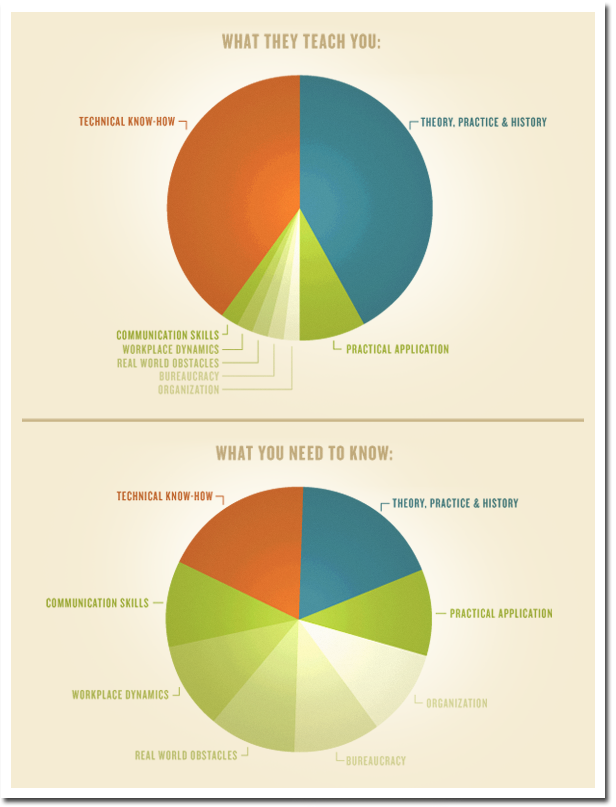Over the years, Urban Influence has become increasingly involved in the student community through mentorships, speaking engagements, one-on-one interviews and internship opportunities. We've had the chance to talk with students from all over the country and work with many in our own backyard. It's through this experience (and from our own classroom days) that we've found most schools suck at teaching design for the real world environment.
Most design students' education is focused on technical application and general design theory, so much that simple necessities such as personal organization, basic communication, client dynamics and industry common-practices are overlooked or peppered in as an afterthought. Even those who come out of school with a nice looking portfolio still lack most of the practical skills needed to be an immediate asset to the workforce.
It is for this reason that a huge deficit of jobs exists for graduates fresh out of their design program. Most studios and agencies know that green designers require a huge time investment and pose the highest risk of failure, burn-out and job switching, making the barrier to entry that much harder for this group. Internships are often the golden ticket to making the transition from classroom to workplace, but these are skills that could (and should) be taught in the classroom. Internships also present a mixed bag as the ones who provide extensive hands-on experience often come unpaid due to the time investment required by the company to undertake an intern's education. This is an expense that not many 20-somethings with fresh student-loans can afford.
While design programs vary widely from school to school, the lacking necessities seem almost universal. More focus needs placed on the job itself, not just the product produced while at that job. So many students are disorganized, poor communicators and have zero conditioning for how to act in a workplace (let alone in front of a client). Additionally, the work that many students produce in school lacks realistic parameters, deadlines and the considerations that typically go into real world projects (let alone simulated client feedback, budget restraints, agency bureaucracy, usability restrictions, or any of the really nasty stuff). The graph below illustrates, at a glance where most schools put their focus and why the approach hurts the students once they get to the workplace:

So why don't schools offer more insight into the challenges that await creative professionals in today's workplace? Simply put: because they aren't fun! Most students choose visual design because they have a passion to create or express themselves, and being bogged down with the hard realities of professional life can be a real buzz kill. With our generations' fickle attention span, getting scared straight before you even leave the gate can be grim for some schools. As new students get discouraged they often change their major, hurting the department, or even dropout which hurts the school. Most schools and their respective departments are in the business of graduates (not education) and only keep their funding if students keep their interest and their grades.
While not all schools succumb to these educational shortfalls, I employ those that do to knock it off! While it might hurt enrollment short-term, it will ultimately lead to a higher job placement rate for those who make it through the program, and add long-term value to the school, and most importantly, its students.
